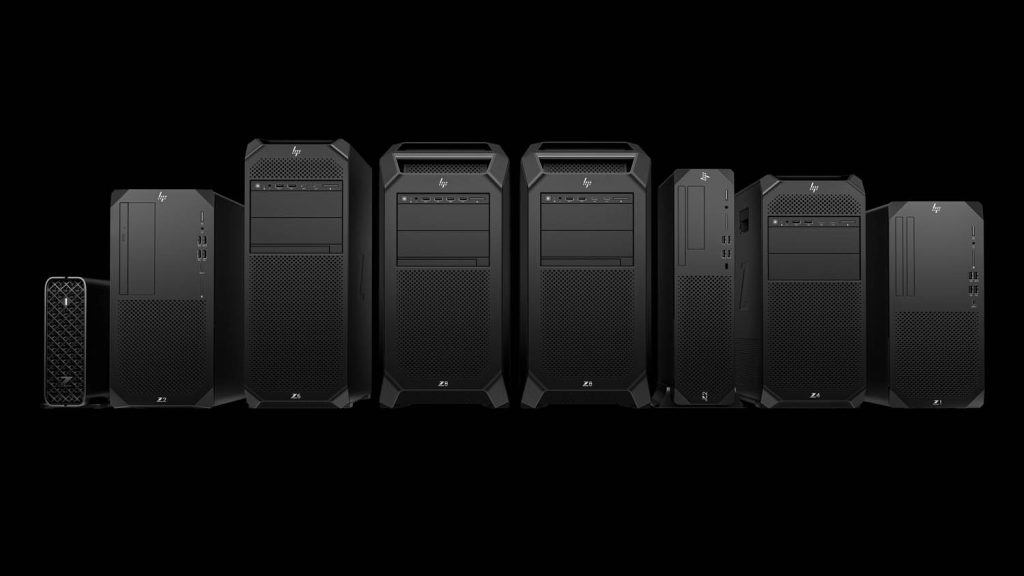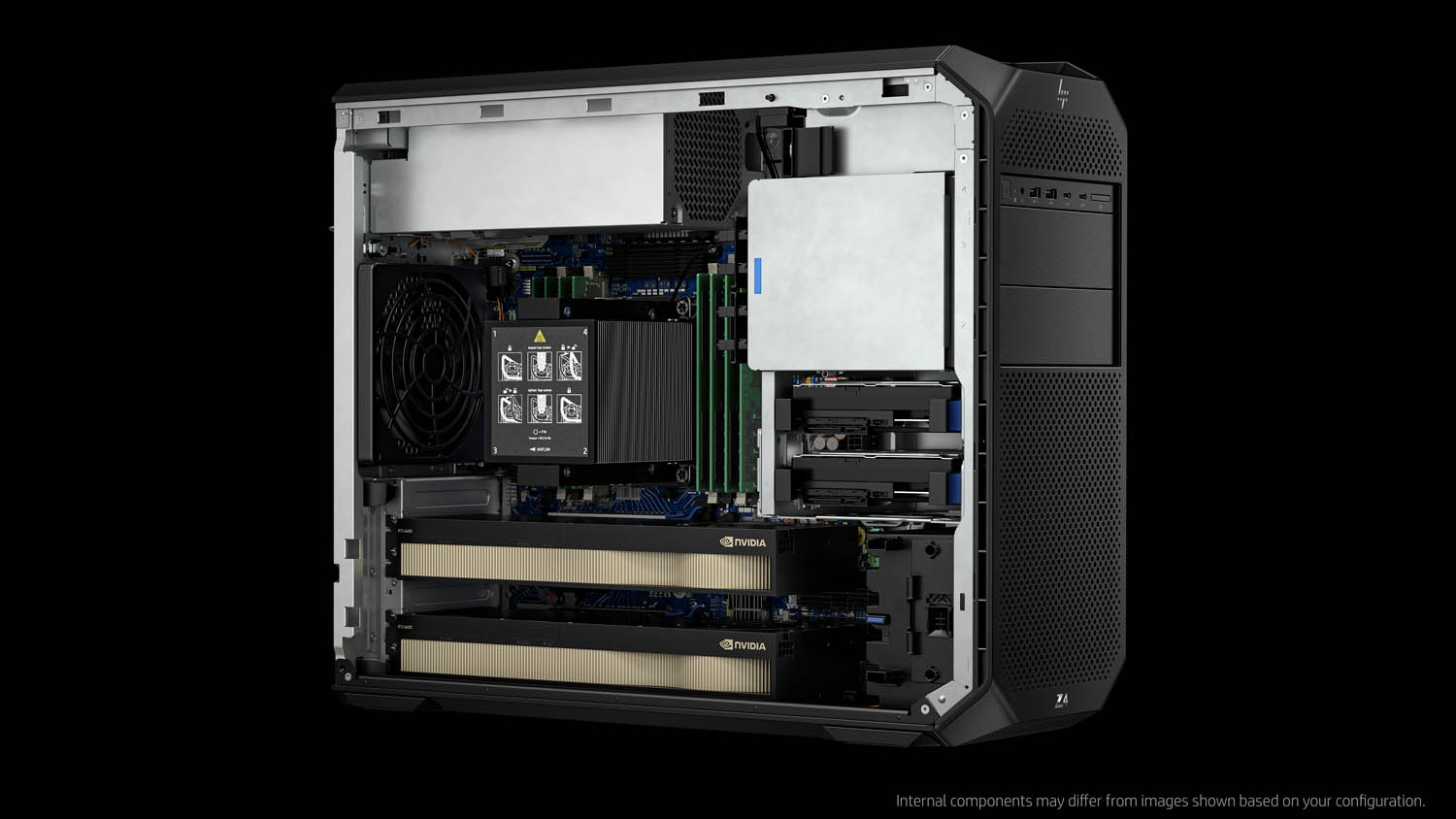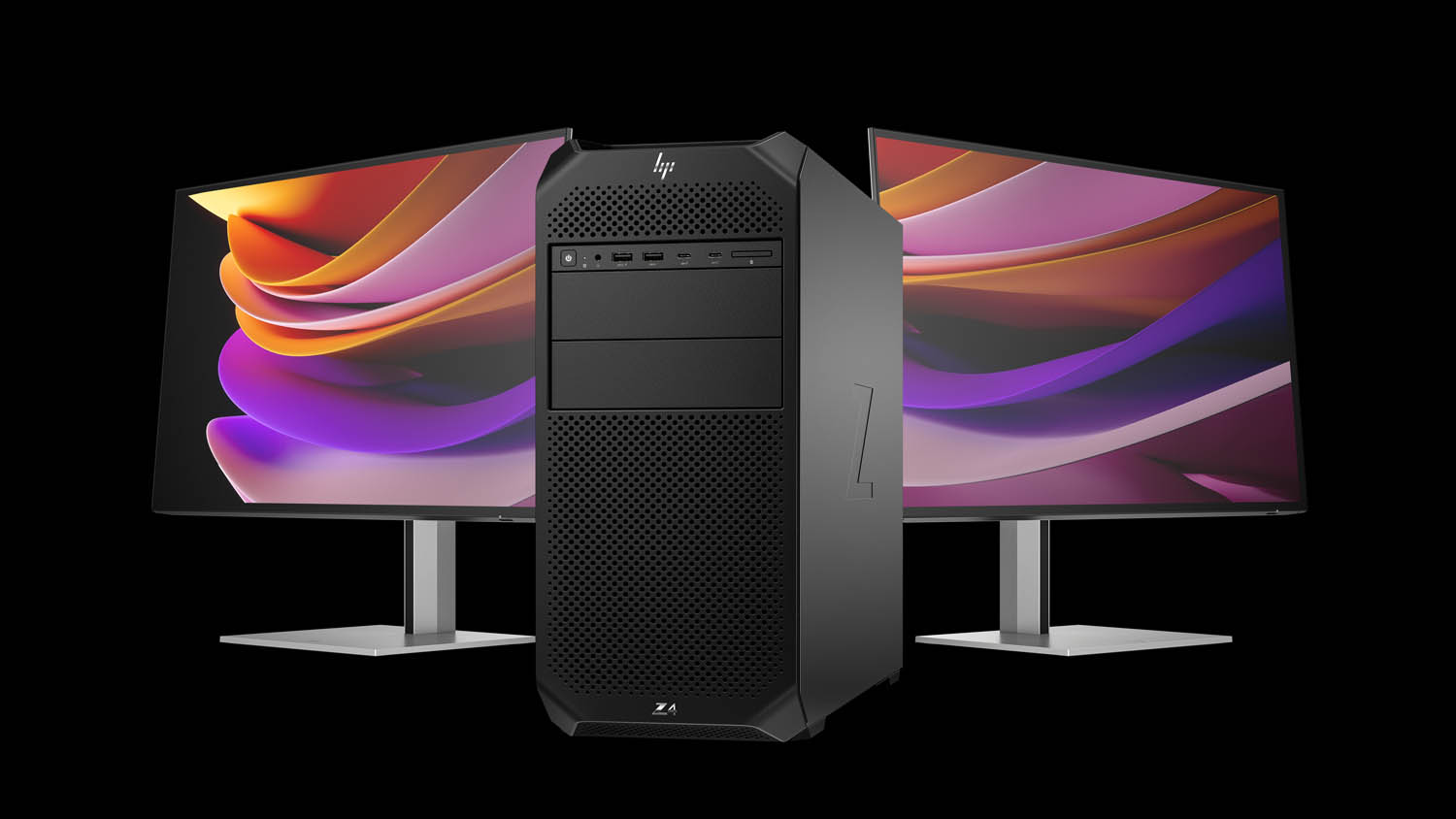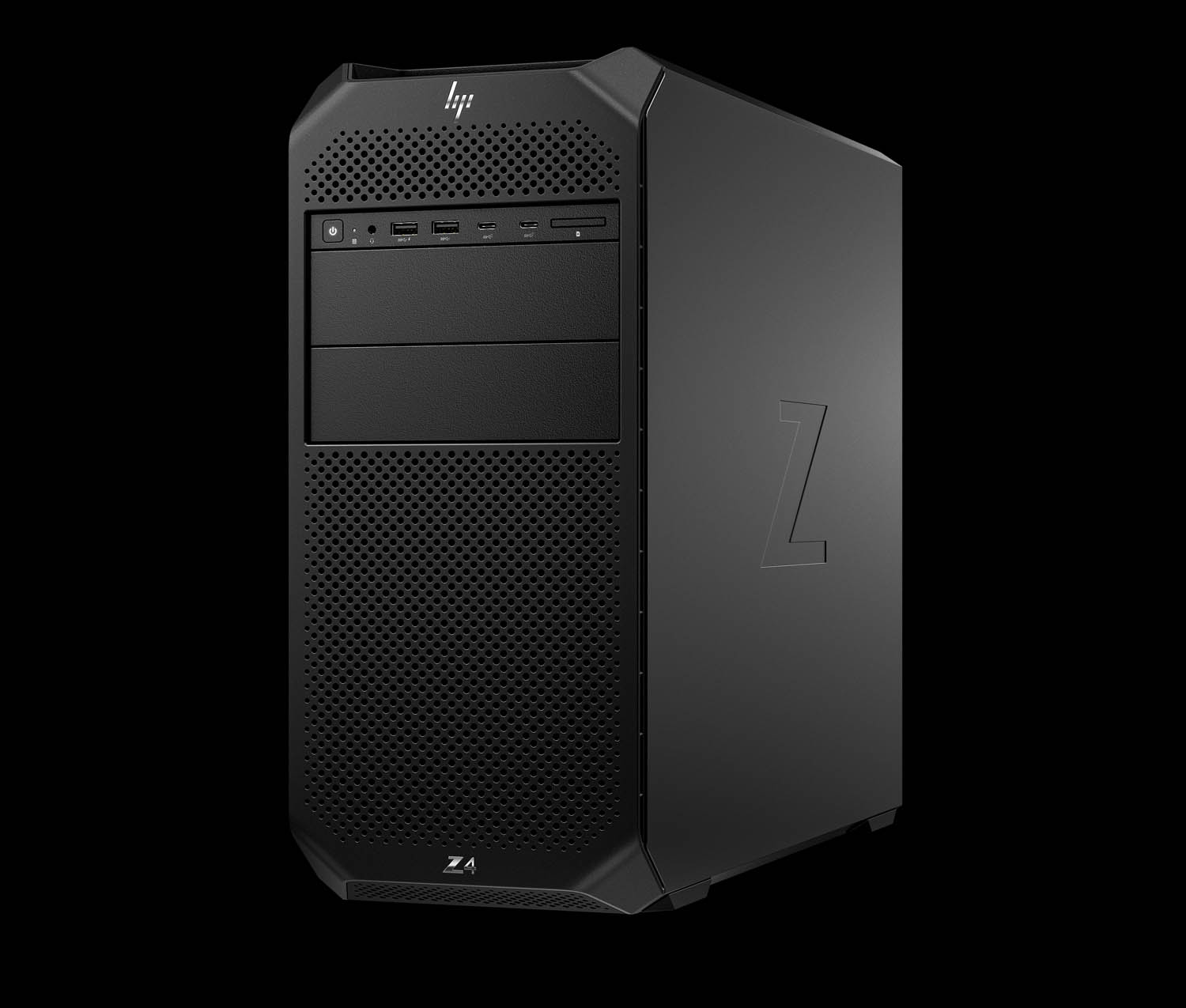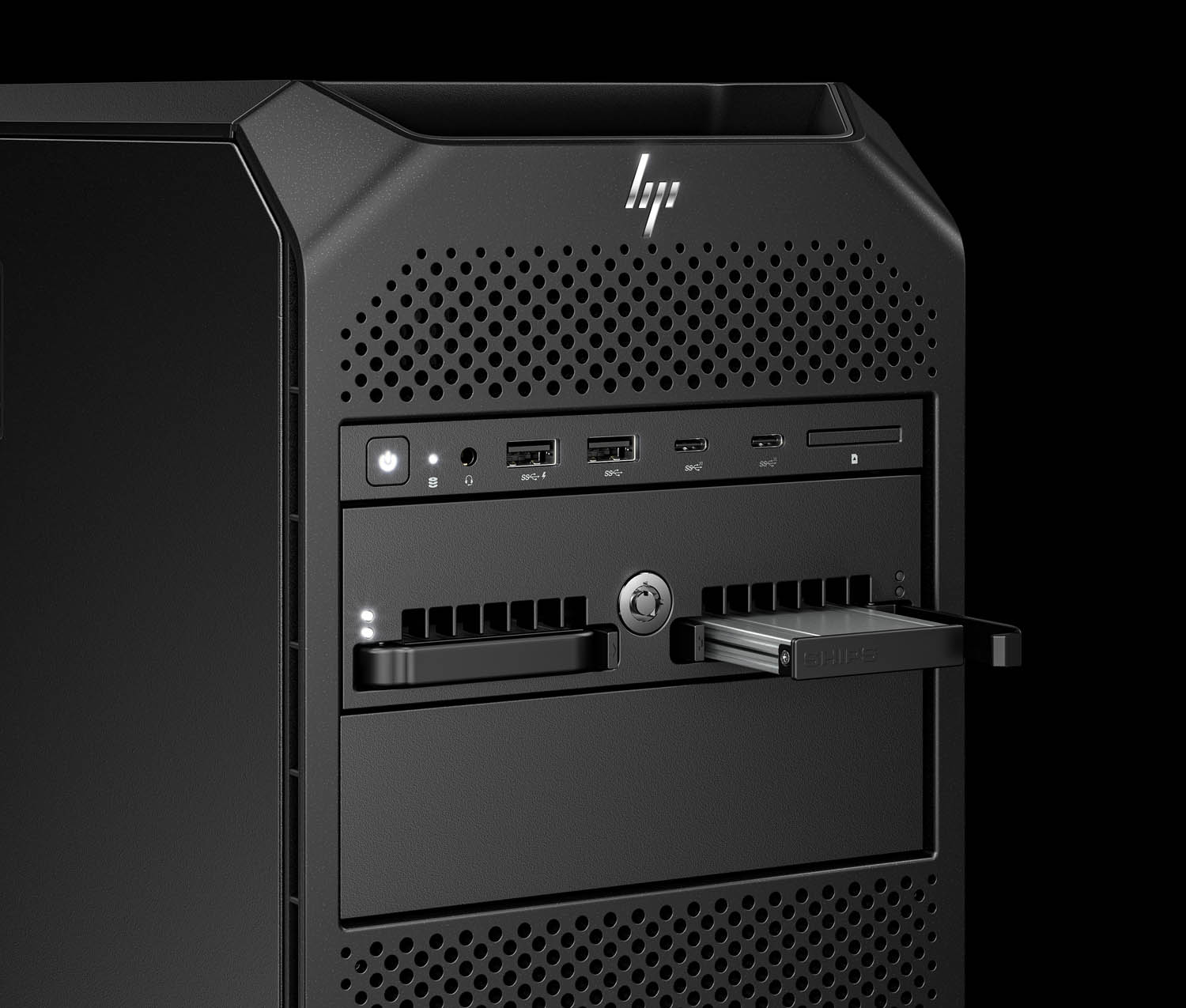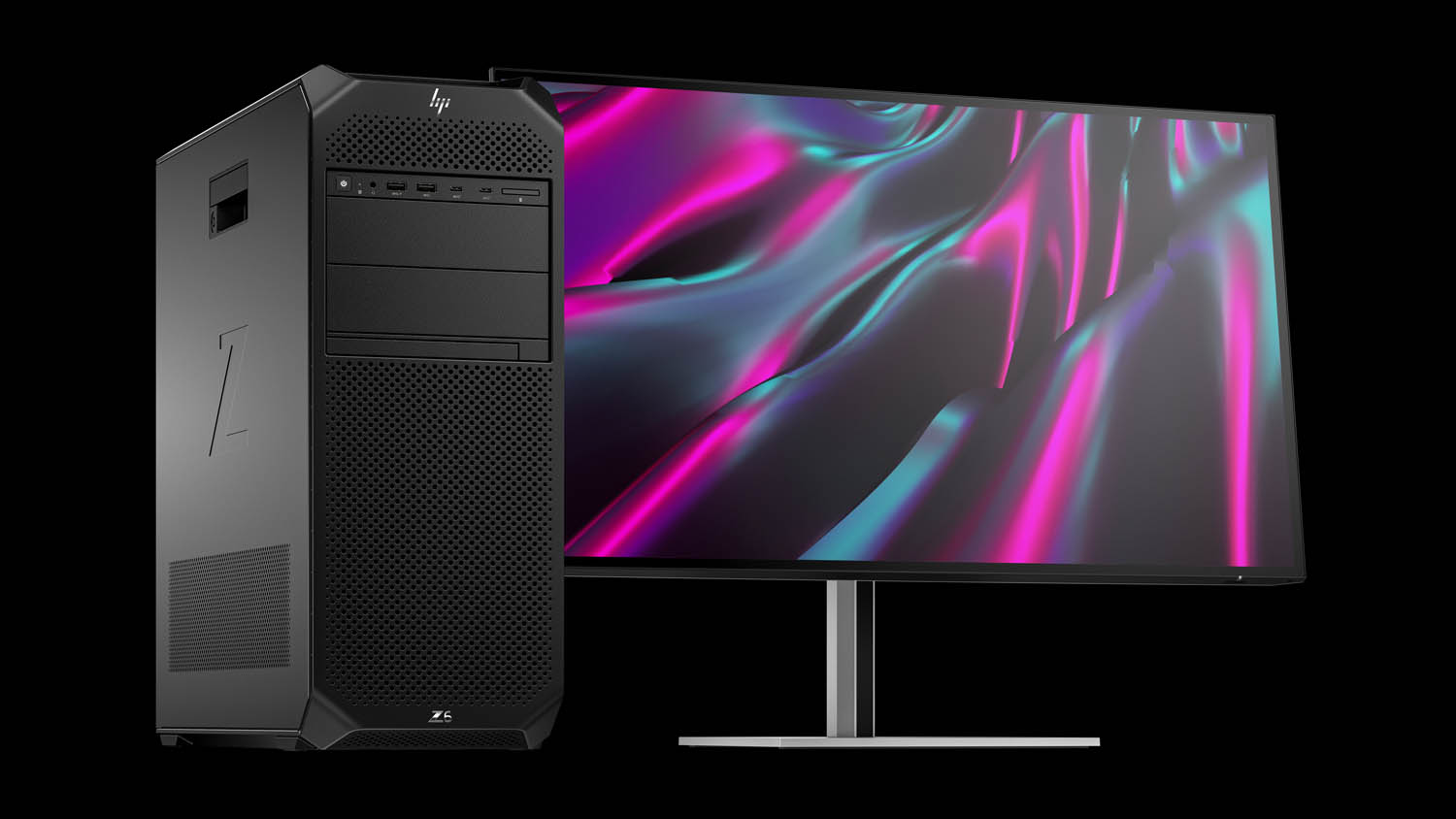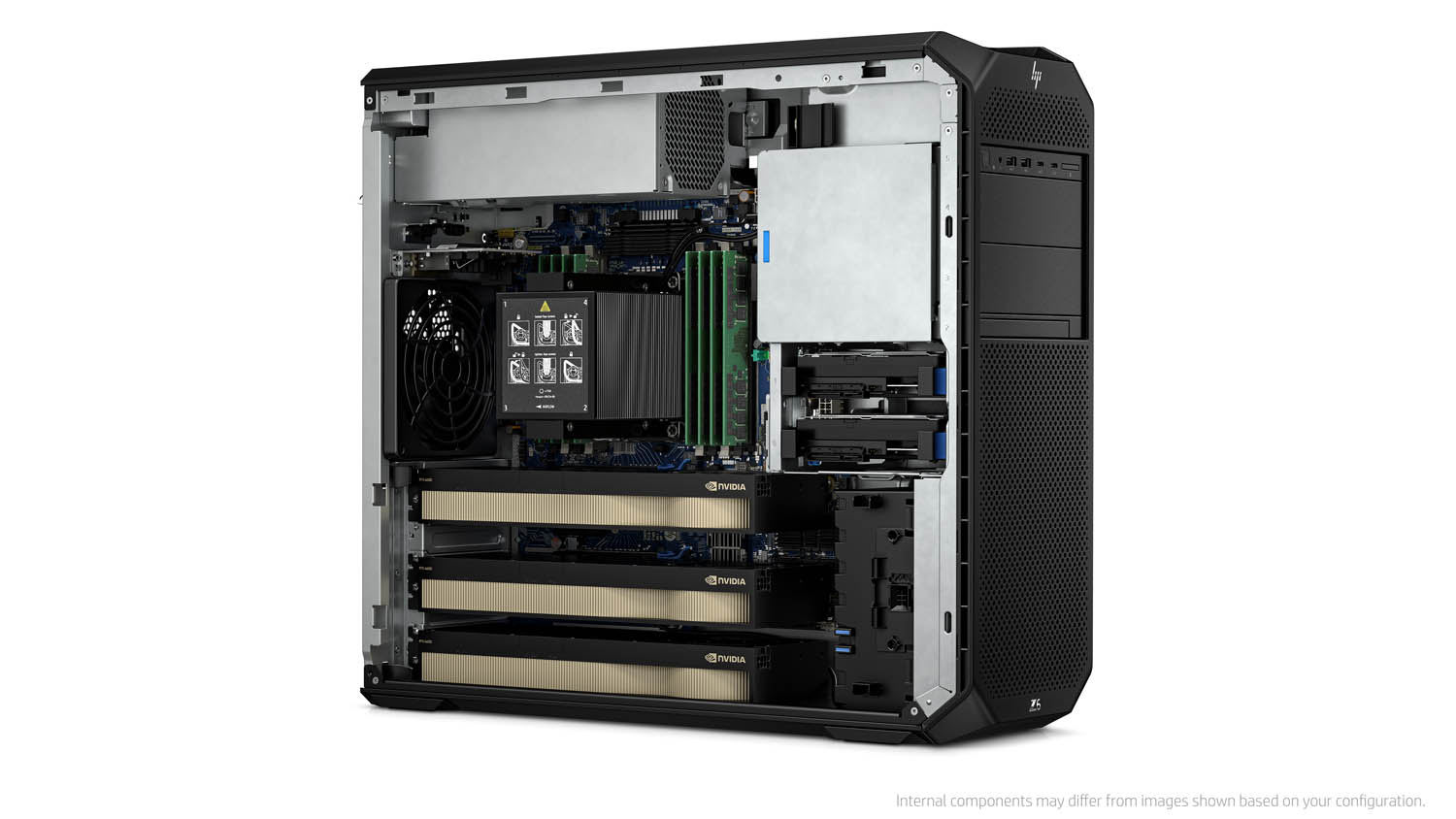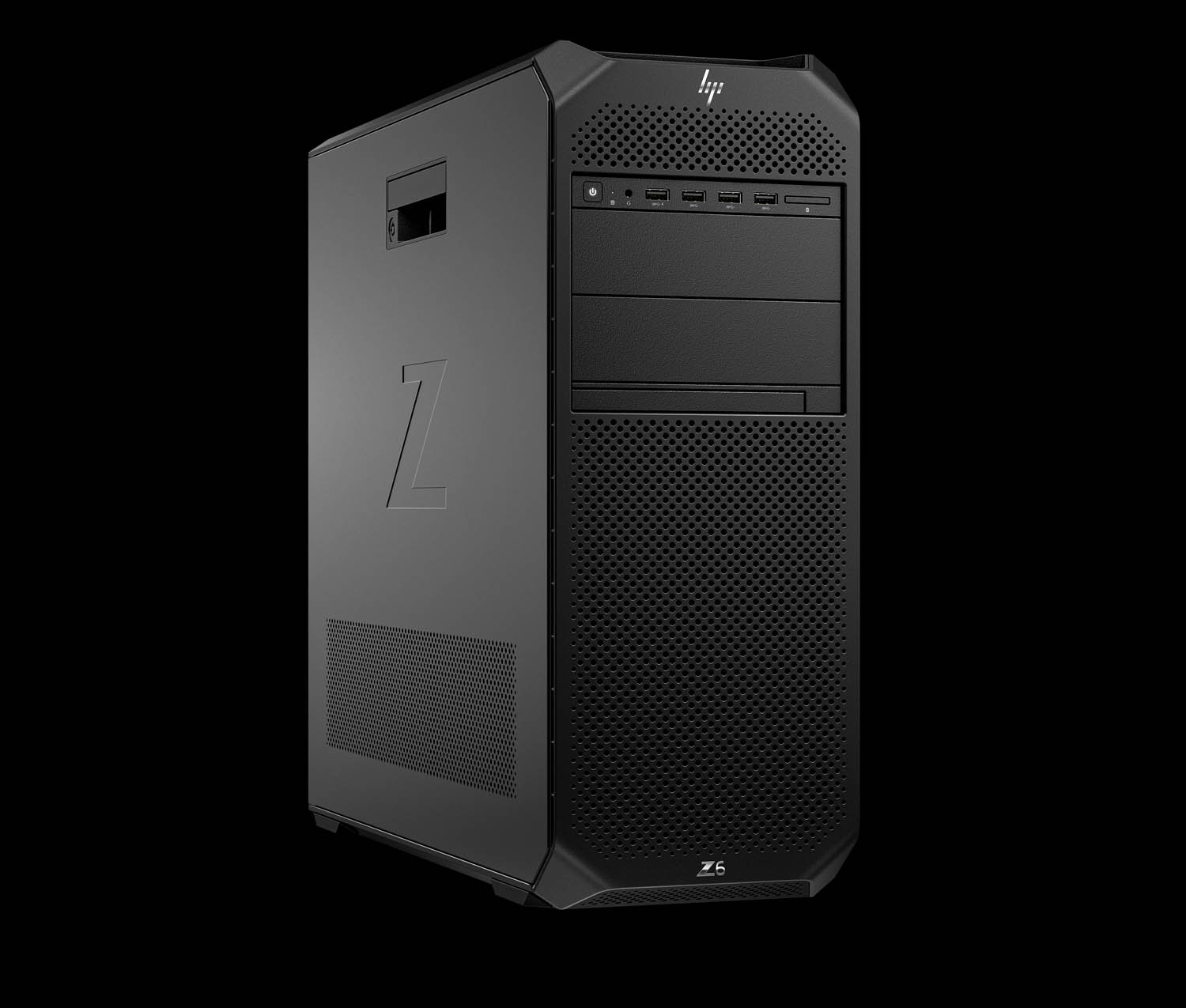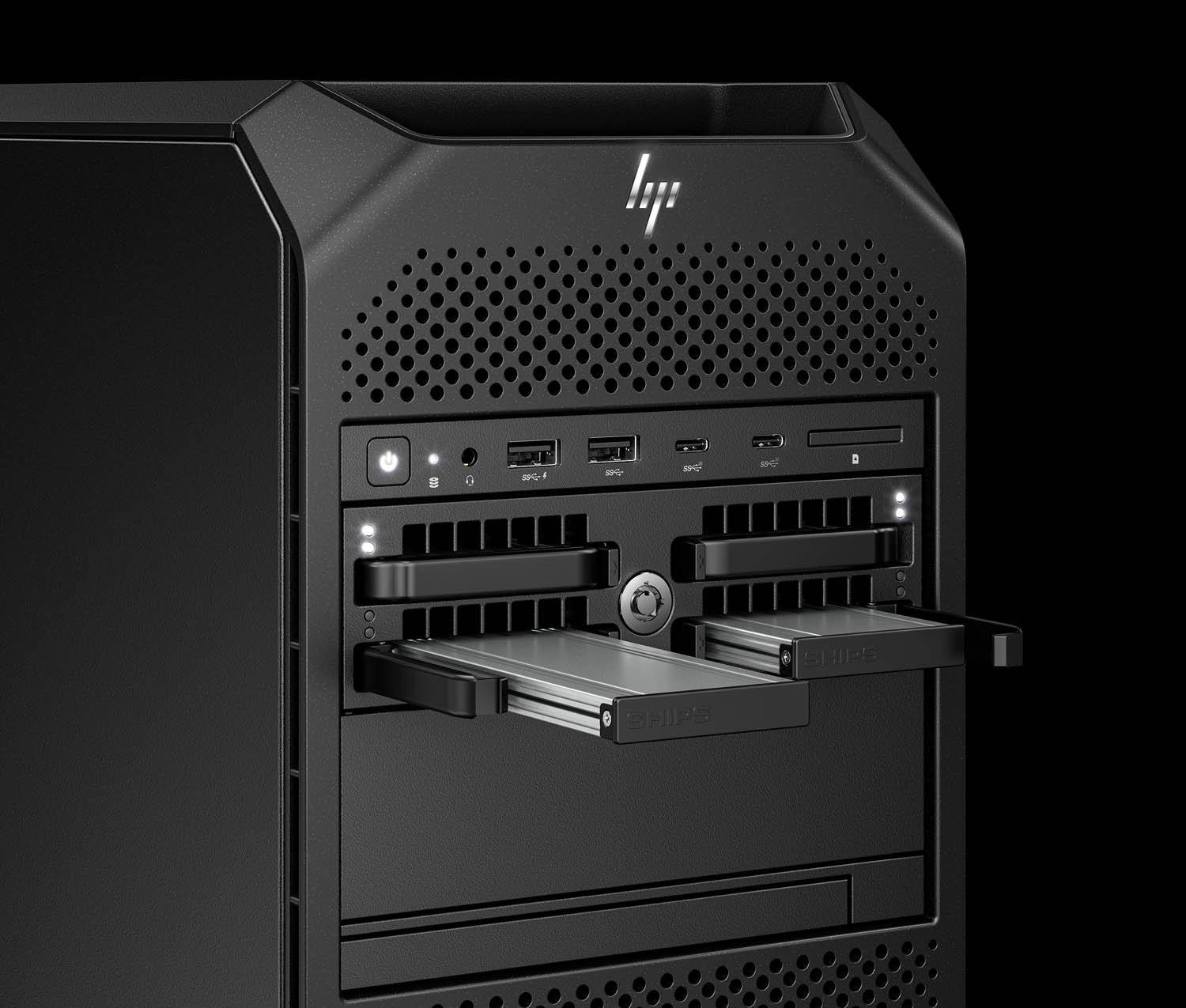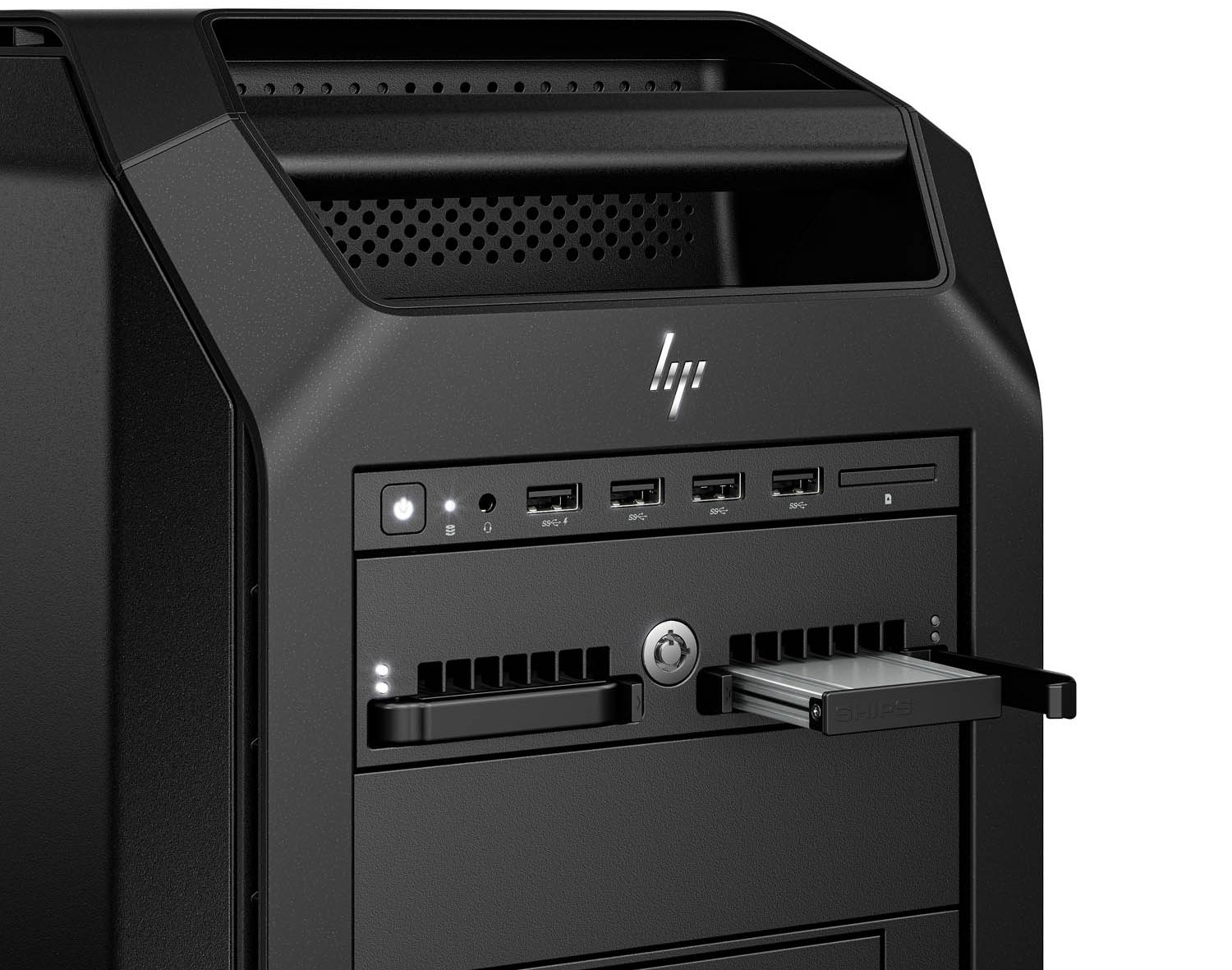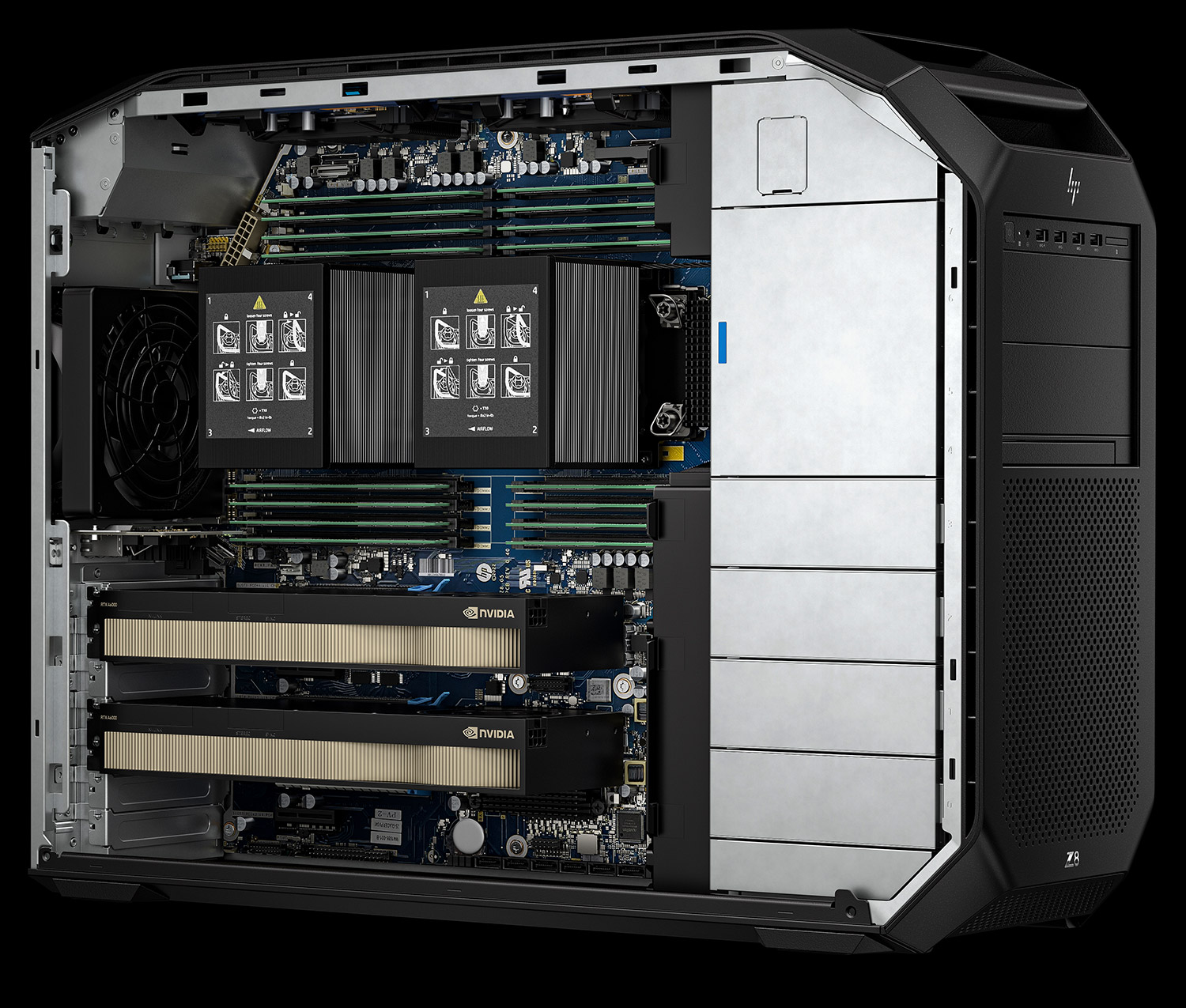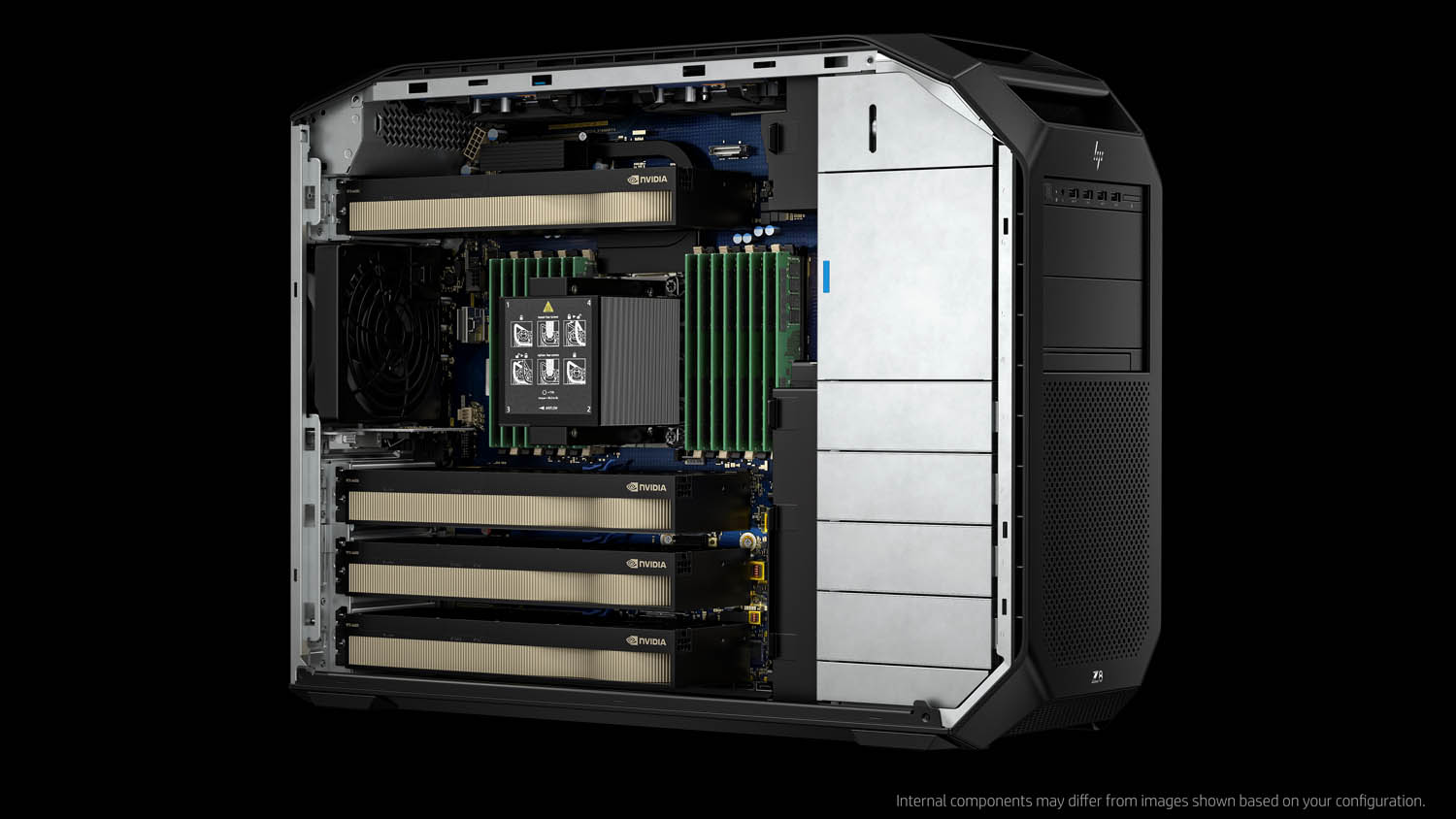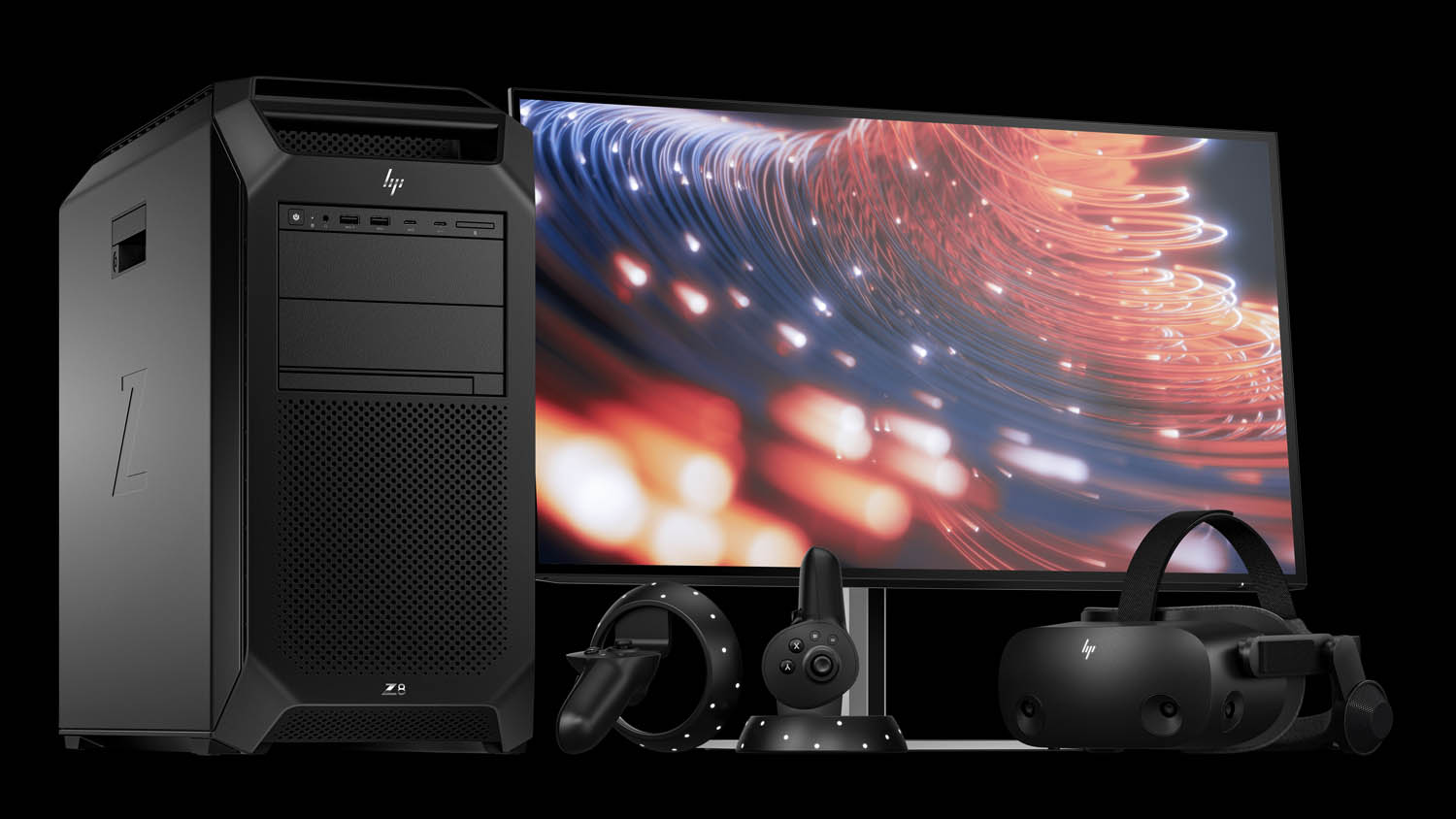HP Z4, Z6, Z8 and Z8 Fury G5 target demanding AEC professionals, from viz to simulation
HP has made a major update to its Z Workstation portfolio, launching G5 editions of its HP Z4, Z6 and Z8 desktop machines. The new towers will replace the G4 editions which were first introduced way back in 2017.
The new HP Z workstations are built from the ground up for Intel’s long-awaited ‘Sapphire Rapids’ workstation processors. This includes the Intel Xeon W-2400 Series (with up to 24 cores) and Intel Xeon W-3400 Series (with up to 56-cores).
With an emphasis on cores, as opposed to the highest clock speeds, plus support for up to four high-end GPUs and lots of high-bandwidth DDR5 memory, the new workstations look best suited to more demanding AEC workflows such as visualisation, reality modelling and simulation. On paper, mainstream users of CAD and BIM software still look best served by HP’s Intel Core-based workstations, which include the HP Z2 Mini G9 (read our review), Z2 SFF G9 and Z2 Tower G9.
‘Sapphire Rapids’ as a workstation platform is arguably more important to HP than any of the other major workstation manufacturers.
HP has also massively upped its game in remote management, with a view to bringing server level management capabilities to its Z Workstations. The new hardware-based HP Anyware Remote System Controller allows IT administrators to launch a kernel-based virtual machine (KVM) session and perform out-out-of-band management tasks such as pre-boot access, BIOS updates and re-imaging from anywhere.
HP Z4 G5
The HP Z4 G5 edition will feature a new workstation-specific ‘Sapphire Rapids’ CPU family, the single socket Intel Xeon W-2400 Series, available with 6 to 24 cores. The machine supports up to 512 GB of DDR5 RAM and can host up to two dual slot graphics cards, up to the new ‘Ada Lovelace’ Nvidia RTX 6000 (48 GB), which will benefit multi-GPU aware viz and rendering applications.
HP Z6 G5
The HP Z6 G5 supports the single socket Intel Xeon W-3400 Series workstation CPU from 12 to 36 cores (not including the flagship 56-core Intel Xeon w9-3495X). It offers double the memory of the HP Z4 G5 (up to 1 TB), more memory bandwidth, and up to three double height GPUs.
HP Z8 G5
The HP Z8 G5 features ‘Sapphire Rapids’ fourth generation Xeon Scalable processors rather than the single socket workstation-specific Xeons available in the other G5 machines. This gives it a dual CPU capability, although it only supports models up to 32 cores, meaning 64 cores (2 x 32) is the maximum configuration. Dual CPUs means there’s a limit of two dual slot GPUs and 1 TB of memory. In AEC, we imagine this box will be of most interest to users of simulation software, specifically Computational Fluid Dynamics (CFD).
HP Z8 Fury G5
As the name suggests, the HP Z8 Fury G5 is HP’s top-end ‘Sapphire Rapids’ workstation. It supports the whole range of Intel Xeon W-3400 Series workstation CPUs, including the flagship 56-core Intel Xeon w9-3495X. It supports twice as much memory as the Z6 and Z8 and up to four dual slot GPUs, which will be of interest to those pushing the boundaries of GPU rendering, AI or simulation, and has several server-grade features.
Server grade features
HP has introduced several features that are more commonly found in servers, with a view to minimising downtime and enhancing system management. This includes hot swappable M.2 SSDs, redundant power supplies and the new HP Anyware Remote System Controller.
Up to four front accessible, hot-swappable M.2 SSDs are available as an option on all new HP Z G5 workstations. Should a drive fail or need to be upgraded it can be easily swapped out, a feature that will be particularly useful for rack deployments. HP also says it will benefit customers who want to remove sensitive data at night and secure drives in a safe. To prevent unauthorised removal, drives can also be secured with physical key lock.
The HP Z8 Fury G5 has the unique ability among the new Z Workstations to be fitted with dual 1,125-watt power supplies. These can be set up in ‘redundant mode’ so if one PSU fails, the next one automatically picks up, meaning ‘zero downtime’. This feature is not available with super high-end configurations, however. When loaded with four dual slot GPUs, for example, the machine will need to use both 1,125-watt PSUs as a 2,250-watt aggregate power supply.

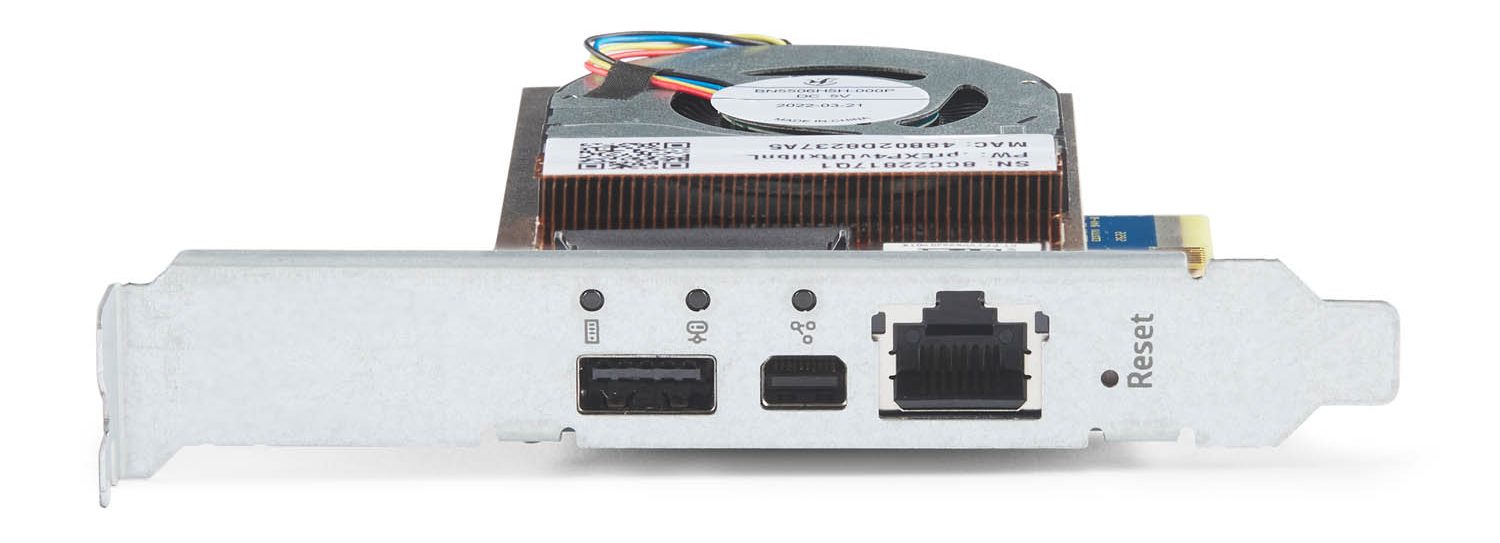
The HP Anyware Remote System Controller is a new hardware add-on designed to bring server level management capabilities to HP Z workstations. According to HP, it’s essentially an IP KVM for client level devices, allowing IT managers to access all machines through a single dashboard.
HP says the controller will help IT managers better manage fleets of workstations – desktop, rack and hybrid deployments. It will allow them to remote in, power workstations on and off remotely, perform bare metal imaging (with multiple Operating Systems) manage inventory, and get hardware alerts and diagnostics info.
The HP Anyware Remote System Controller is available in two form factors – an internal PCIe card or external USB box. It also works with other workstations, although with a limited set of features.
What AEC Magazine thinks
‘Sapphire Rapids’ as a workstation platform is arguably more important to HP than any of the other major workstation manufacturers. Prior to the launch of these new machines, HP had to satisfy the requirements of its more demanding AEC customers through its ageing ‘Cascade Lake’ Intel Xeon HP Z G4 workstations that dated back to 2017. Meanwhile, Dell and Lenovo had plugged the gap by launching AMD Ryzen Threadripper Pro workstations with up to 2 TB of memory and 64 cores.
HP’s new workstations also face increased competition from within. The HP Z2 family has grown in capability considerably over the last few years and the G9 editions with high-frequency 12th Gen Intel Core processors are arguably the better choice for CAD and BIM. Moreover, with high-performance graphics and up to 128 GB of memory they can now deliver in more demanding AEC workflows as well, including reality modelling and mainstream design visualisation. This leaves the new Z4, Z6 and Z8 G5 workstations to largely cater to workflows that only benefit from more CPU cores, more memory, more memory bandwidth, or more GPUs. We wonder if the HP Z4 G5 will be able to retain its crown as HP’s best-selling workstation.
Beyond the ‘Sapphire Lakes’ platform, HP is showing real innovation in remote workstation deployment and management. With HP Anyware Remote System Controller, it is looking to give IT managers a similar level of control over their workstation fleet as they already have over their servers.
Combined with HP Anyware remote access and collaboration software, HP now has a joined-up solution to support the growing shift towards hybrid working. With high clock speeds, HP Z Workstations typically offer superior performance to server-based virtual workstations. Now with increased manageability, using HP Z Workstation as a central rack mounted resource has become more compelling, blurring the boundaries between traditional desktop workstations and servers.
Meanwhile, redundant power supplies and hot swappable SSDs all add to the offering, although Dell already offered front accessible drives in its ‘Cascade Lake’ workstations.
The HP Z4, Z6, Z8, Z8 Fury G5 will be available for pre-order starting today on HP.com.
The HP Anyware Remote System Controller is expected to be available this spring. Pricing will be available closer to product availability.

